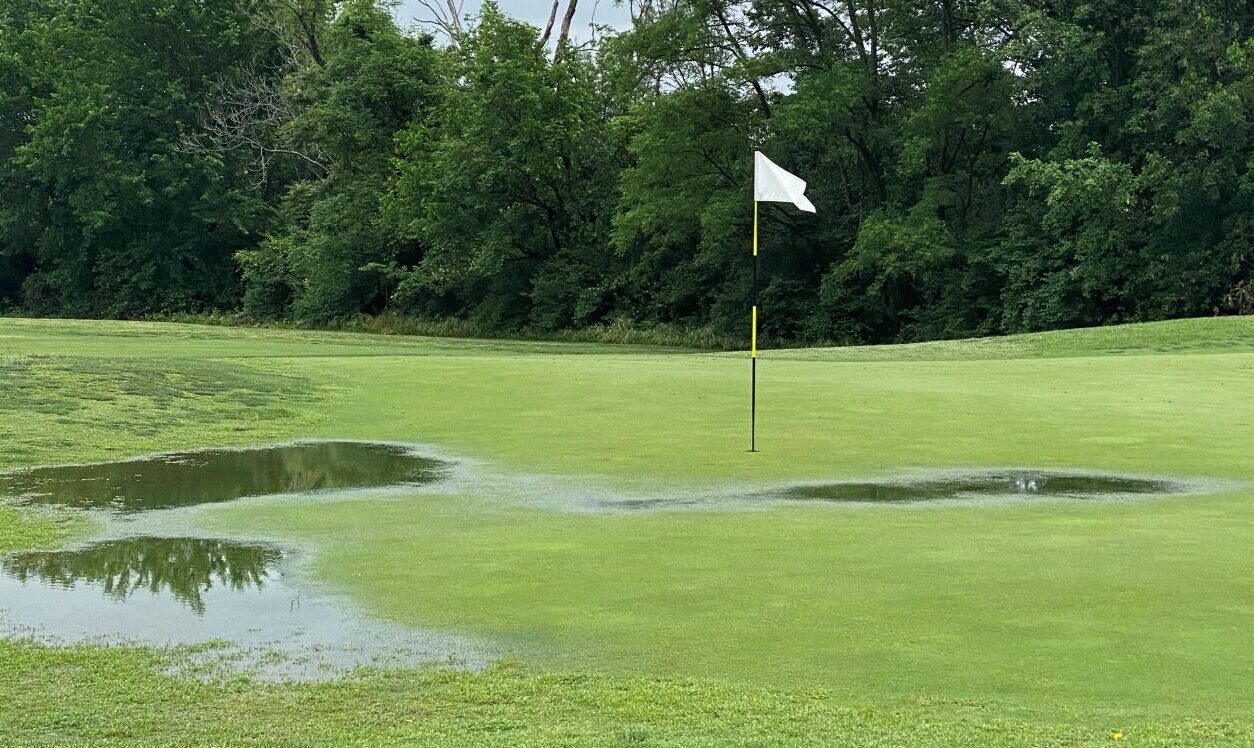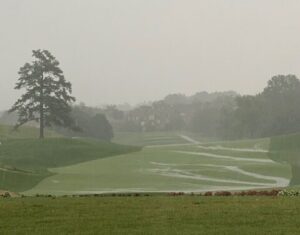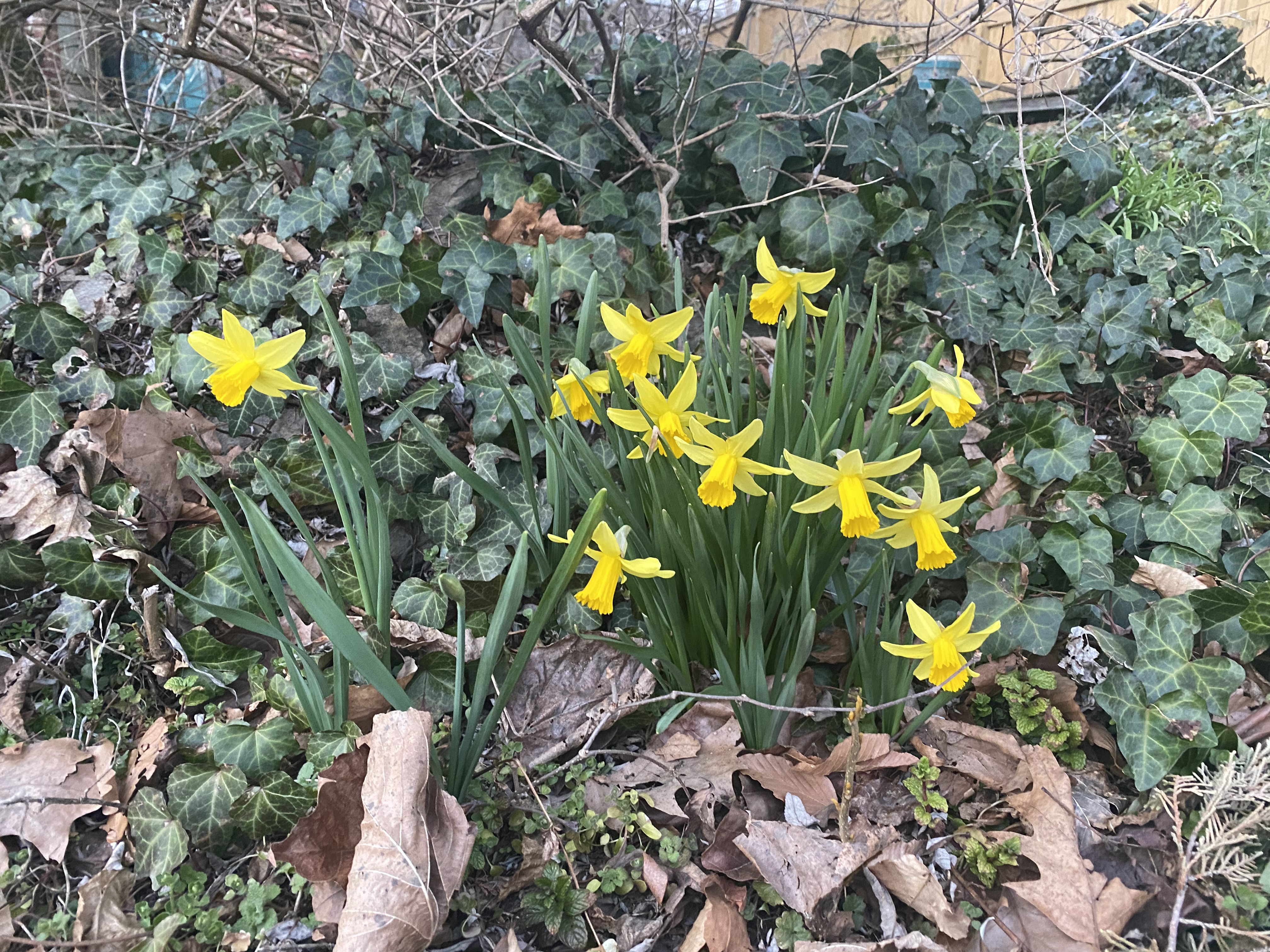Why is Golf in the Washington, DC Area Subpar…And How it is About to Get Better
When one thinks of golf in and around Washington, DC, thoughts usually center on the numerous professional events that have been held in the area. There were US Opens won by Ken Venturi, Ernie Els and Rory McIlroy, not to mention a regular tour event for decades, including Tiger Woods choosing to host his tournament in the area for a little over ten years. However, rarely does one think about DC as a golf destination or as an area with numerous “must-play” golf courses, especially ones that are considered architecturally significant. And if you for some reason judge courses by rankings, the course that hosted those major championships above and the highest rated course in the area – Congressional Country Club’s Blue Course – is well down the list, usually in the last 5th of top 100 U.S. courses. As for being in the top 100 at all, some would say that this ranking is probably too high and more of a reflection of where it is (near Washington) and its members than the merits of its layout (fingers crossed that the recent redesign finally matches the quality of the course with its perception).
There are good courses in the area, but there are no complete MacDonald, MacKenzie, Raynor, Ross or Tillinghast designs still existing in the immediate Washington vicinity. Yes, Emmet worked at Congressional, there are several notable names attached to Burning Tree, and Ross may have tinkered with the designs at Washington Golf and Columbia, but none of these are pure representations from these names. This lack of complete work from big name architects is not limited to the early part of last century, as there are no Coore & Crenshaw, Dye, Doak, Hanse or Strantz courses around either. You would need to drive to Baltimore (Tillinghast, Raynor and MacDonald), north of Baltimore (Dye and an unfortunately now-defunct Doak), western Maryland near the Pennsylvania border (Ross) or other places in the northeast and south to experience golf on courses by such designers.
The area, however, is not lacking in courses from notable names, as there are efforts scattered around from Nicklaus, Palmer, Els, Norman, Player and Price, not to mention work by Robert Trent Jones, including the club bearing his name on Lake Manassas. You can’t go very far before you run into a course from the local design team of Ault Clark & Associates, who at first glance might appear to have designed, redesigned or consulted on most every course near DC. And no offense to Messrs Ault and Clark, who unquestionably contributed significantly to the availability and accessibility of golf in the Washington area, but they are not typically considered groundbreaking or influential in golf course design. It’s probably not a surprise, but a lot of their work also corresponded with the growth of golf course communities where the focus on housing inevitably came at the detriment of course design. So while it’s doubtful an Ault Clark design will be on anyone’s bucket list, they did what was asked of them for the dominant golf course design focus of the time.
The question then is why did and have designers largely bypassed greater DC? If you take a map from the northeast, it looks like the famous golf course architects have worked from the northeast south though New York, New Jersey into Philadelphia, Baltimore, skipped the Washington area and then continued in Richmond (Tillinghast even designed a course north of the city!) into the Carolinas and the rest of the south. There are various theories such as the area not being that hospitable to grass (an odd transition zone theory), it’s too transient, too dependent on the federal government, not wealthy enough, golf isn’t popular here, suburban sprawl, poor topography, partisan politics, half smokes, Dan Snyder, etc. Maybe there are parts of these reasons (except maybe the last two or three) that made the sum more of the parts, at least for architects a century ago, but there is no clear explanation. The area did actually have some Ross courses, but they are now NLE – no longer in existence (I currently live across from a neighborhood that once was a Ross course, and I really wish that it was still there – seems like some decent topography in an area that sits on some hills above the Potomac River), so not all of the architects ignored the area, but they clearly didn’t spend much time or effort here either. But as multiple daily fee “country club for a day” courses popped up at the turn of this century leading to the recent resurgence in golf course design, it still remains odd and an oversight that the immediate Washington area has not really enjoyed the fruits of even the modern-day golf architecture renaissance. Until, that is, hopefully it soon will in spades. But first, an aside about professional golf in the area.
Tournament Golf in DC
The Washington, DC sports scene has been quite visible and fairly victorious as of late, with the Capitols finally winning their first Stanley Cup in 2018 to a year later seeing the Mystics win their first WNBA championship and the Nationals capping an incredible late season run by winning the World Series (dissecting the Washington Football Team, Wizards and DC United post Rooney is beyond the scope of this article). But golf is a different story, as for at least the next several years, the area will be pretty much off of the national golf radar as host of a regular professional event.
When the Quicken Loans tournament, formerly the event originated by Woods as the AT&T National in 2007, moved to Detroit two years ago, the DC area was back to where it was before Woods saved it when the Kemper/FBR Capital/Booz Allen Hamilton/Duke Zeiberts/Kemp Mill/Erols tournament ended its 38 year run in 2006 (not all of that time in the DC area and not all actual sponsors) – without a regular professional golf event. Yes, 2022 hopefully will see TPC Potomac sub in for Quail Hollow for the Wells Fargo, but DC does not have a permanent spot on the PGA schedule. And after McIlroy pounded Congressional Blue into submission in 2001, that course is currently undergoing massive renovations that were needed for it to move to become a championship venue again for the PGA. The PGA’s commitment to Congressional is definitely impressive as numerous national championships are planned for the Blue Course over the next 16 years – a PGA Championship (2031) two Women’s PGA Championships (2022 and 2027), two Senior PGA Championships (2025 and 2033) and a Ryder Cup (2036). The area also likely will continue to see important national events that may fly below the radar (many may have missed the US Women’s Amateur at Woodmont last summer) and should continue to be attractive to the national tournament scene. Maybe the PGA tour will even come back on a regular basis, especially since TPC Potomac offers a stern test compared to a number of regular arguably subpar venues currently on the tour’s rotation.
But with the lack of consistent tournament golf and the recent emphasis on public and municipal courses for professional events, especially majors (Chambers Bay, Torrey Pines, Bethpage, Harding Park, etc.), some may believe that the DC area should do something to attract an event – build or renovate a public course to attract a major tournament. Unfortunately, doing so often comes at the expense of the golfer who is dedicated to their local “dirt track” – trying to land a major at a muni means the course likely will become too difficult, bland, too expensive or overrun by tourists and those who have to check off a major bucket list course, or all of the above.
Bayou Oaks
As an example, Rees Jones recently built a new 18 hole course in New Orleans, Bayou Oaks, on a site that previously held two courses devastated by Hurricane Katrina. While something needed to be done after Katrina and there is more open space for other activities now that there’s only one course, the resulting golf course is quite simply and sadly, uninspiring, and there are several reasons why. The idea for the renovation sprung from a noble idea to help communities in New Orleans, modeled on East Lake in Atlanta. East Lake, as most know, is home to the PGA Tour Championship, but it is also owned by a charitable foundation with one of its main goals to revitalize the surrounding neighborhoods. However, East Lake is private, and proceeds from the club and the tournament are used to help the community – it is not and has never been meant to be a public or municipal course. Bayou Oaks, on the other hand, is a public course owned by the city. And while a portion of revenues from Bayou Oaks will go to helping the community, they missed the mark on the opportunity to build a course designed for golfers in the community, which in turn would help drive more revenues for community development. Instead, they’re stuck with a course lacking in quality that likely will not generate the revenues anticipated.
Which leads me to the hopefully growing belief that the main focus of municipal golf should be on the citizens of the municipalities, not the potential to host a professional event. If you can corral a major or regular event on any tour because of history (Bethpage) or location (Torrey), then great. Overall, though, a municipal golf course should provide fun and affordable golf and serve as a strong hub, which can help local communities in different and important ways, and renovations should work to those ends. But in New Orleans, Rees came in (another reason why the course suffers, but I digress) and now the city is left with a tough and boring course that likely will need additional work to get even the Zurich Classic to move across the river (full disclosure – I’ve only played Bayou Oaks once, and that was right after it opened, but it was less than impressive and I don’t feel the need to play it again).
Bayou Oaks seems to have been designed only with the hopes of getting an event – you can still find a NY Times article from 2017 on the Rees Jones Golf design website that states, “The Zurich Classic is held at TPC Louisiana, but Bayou Oaks would like to host a prominent event” – that it may not. As such, it clearly was not designed with the New Orleans municipal golfer in mind – renovating a course to host a professional event versus renovating one to cater to those who play there the other 51 weeks of the year usually are not one and the same. And again, New Orleans already has a regular professional event and maybe it’s not in the city proper, but that’s unfortunately likely the best that the area will do (no chance the PGA or US Open comes down to the Big Easy in May or June). Fortunately, it appears that Washington, DC has decided to go a different route and completely appeal to and support the average DC golfer who has endured the paucity of quality courses, instead of renovating for professionals and trying to land a white whale event.
The National Links Trust – 100 Years in the Making
It’s almost as if this historical golf design neglect was what the DC area had to endure for the unbridled excitement of what could come next. Astute readers will note that missing from the above discussion of DC golf history are any references to the three municipal courses within the Washington, DC city limits – East Potomac Park, Langston and Rock Creek. These three break the mold in that at least two of them were designed by notable Golden Age architects – William Flynn and Walter Travis. Almost a century ago, Travis designed a reversible nine at East Potomac, which later became 18 and then 27 when Flynn designed nine more. Flynn also designed the course at Rock Creek, and Langston came on the scene a decade or so later as a place where African Americans could safely and comfortably enjoy the game. All of these courses enjoyed notoriety, especially the East Potomac courses, and Langston has continued as an important part of the African American golf community, but over time the quality of each course has fallen off a cliff. East Potomac’s demise was aided by the driving range that most DC area golfers have frequented repeatedly, but each has degraded considerably. As Mike McCartin writes in his seminal case study of East Potomac, but applies just as much to all three facilities, they have all become “typical, run down, architecturally vapid municipal course(s).”
Finally recognizing all of this, the owner and manager of these courses, the National Park Service (NPS), decided to bid out a long-term lease for operations. The National Links Trust (NLT), a non-profit founded by McCartin and Will Smith “to preserve and protect affordable, accessible and architecturally engaging public access golf” was chosen by the NPS to operate the courses, effective last fall. While that in and of itself may not mean much to you, what NLT has proposed for these three courses is extraordinary and something that they hope will lead to more towns and cities following this model. NLT has enlisted Doak, Hanse and Beau Welling to help with the renovations. Doak will work to renovate East Potomac by going back to its routes with a planned reversible layout. Hanse will take on Rock Creek, and Welling, a Senior Design Consultant with TGR Design (Tiger Woods), will work on Langston. NLT also has brought on board Mike Keiser as an advisor – Keiser founded Bandon Dunes in Oregon and Sand Valley in Wisconsin, among others, and has been credited as recreating public golf in this country – and Troon Golf will manage the properties. Just as importantly, NLT also is working with several local DC organizations such as the First Tee of Greater Washington, the Anacostia Watershed Society and many others.
NLT is getting to work, but it won’t be easy to accomplish their goals given the degradation of the facilities. Even though it doesn’t have a Golden Age architect attached to it, Langston still has the best bones and likely will not need as much work as the other two. Many who’ve played it probably don’t even realize that the first few holes on the back nine are on an island in the Anacostia River, so by starting by simply cleaning out invasive vegetation, Langston players would have some scenic holes along the river and one of its watersheds. East Potomac could be more difficult given its flat terrain and tendency to become waterlogged, but if anyone can figure it out, it’s Doak and his design team. And making a reversible 18 there will help on maintaining it from what likely will be exorbitant play, not to mention making it play differently from day to day. Rock Creek could be the most fun given its hilly terrain, and proposals to add a par 3 course there sound perfect for that facility and the Washington area golfer who wants to pop in for a quick round after work. Improving practice facilities at each such as enhancing putting greens and maybe even adding a putting course like the Himalayas at St. Andrews, Thistle Dhu at Pinehurst and the Punchbowl at Bandon will provide additional incentives and attraction to make these courses hubs of the community, not only for golfers but for nongolfers as well who may just be tempted to putt around or hit a few balls just to try out the game.
In short, NLT has out together a dream proposal that hopefully will transform municipal golf in Washington and potentially across the country. In the next decade, we therefore may see what at least the past half century has not – solid, architecturally significant and affordable public golf in the Washington, DC area.
![]()



